How Buddy Rigs a Hollow Swimbait
It’s all about hook penetration when throwing swimbaits for bass
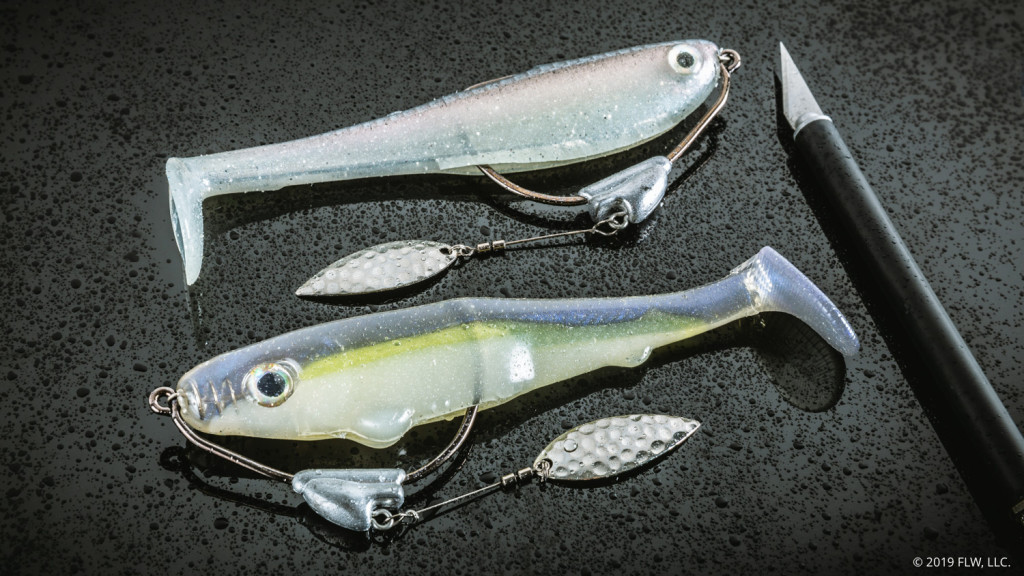
Pro bass anglers know all about small tweaks to optimize bait performance and hook-up ratios. But when it comes to hollow-body swimbaits, there isn’t much in the way of unique tweaks that might differentiate the way anglers rig them. In most cases, it comes down to hook choice and bait selection. Grip and rip.
That’s not necessarily the case for Buddy Gross, a four-year FLW Tour pro with two Tour wins to his name. Gross’ most recent win came at Lake Toho at the Tour’s second top of the 2019 season. He threw two baits all tournament long, pulling 19 of the 20 fish he weighed in from one spot with those two baits: a 1/2-ounce homemade white swim jig with a natural light-colored 4-inch Scottboro Tackle Co. Swimbait and the same swimbait in 5- and 6-inch varieties rigged on an 8/0 Owner Beast Flashy Swimmer 3/8-ounce belly-weighted hook.
It’s the Scottsboro Swimbait combined with the Flashy Swimmer we’re going to dissect here, because Gross himself did a little dissection to optimize its performance at Toho, and it’s a tweak he’s been doing for years.
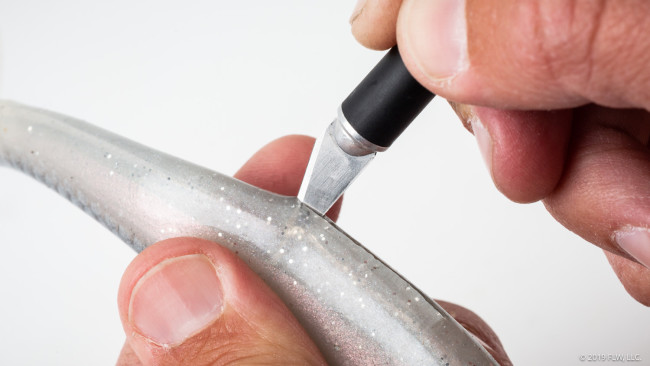
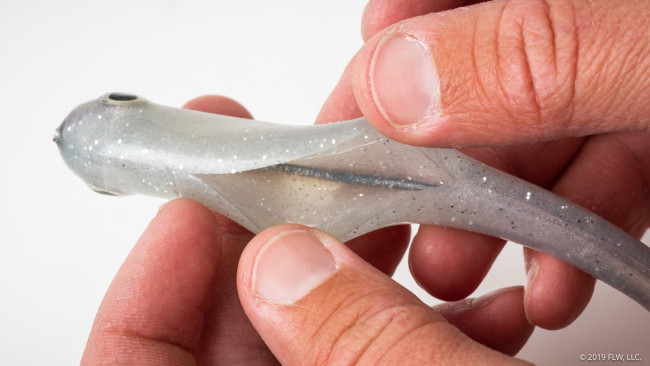
One small tweak for a giant hook-up ratio boost
Gross has been fishing hollow-body swimbaits for a long time, and for most of that time, he’s also cut the belly of those swimbaits to allow for better hook penetration. It’s a simple concept a lot of anglers either don’t think about or wouldn’t consider if they did think about it, due to durability concerns.
For Gross, the hook-up is all that matters.
“I sacrifice the bait for the hook-up,” he says. “I don’t really do it with any other soft bait. It’s a penetration deal. I just try to optimize my chances to get a hook in them more than anything.”
The only time Gross opts not to perform hollow-body swimbait surgery?
“When I’m practicing and I don’t want to hook them as much.”
As soft as most hollow swimbaits can be, cutting the belly to allow the hook to protrude more on the hookset can limit the durability and longevity of each bait. When it matters most, though, hooking the fish and keeping it pinned is what it’s all about.
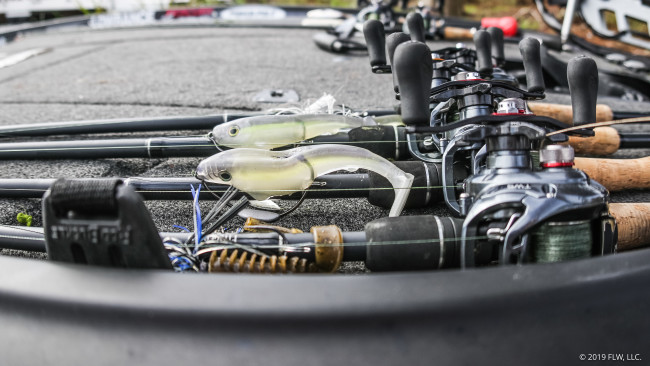
Gross’ bait choices
The Scottsboro got all the attention at Toho, but it was a result of water clarity, mostly. Gross believes that particular swimbait is more natural looking and is best used in clear water. Match the hatch, and choose your size accordingly.
Gross also uses a Zoom Swimmer paddle-tail swimbait, which he relies on in less-than-ideal water clarity.
“I’ve only got two I focus on the most,” he explains. “I use the 5-inch Zoom Swimmer, and I’ll cut it to open it up, too. But the Zoom Swimmer has a little more aggressive action, and if the water has more stain to it, I’ll use the Zoom Swimmer. If it’s cleaner water, I’ll use the Scottsboro.
“Scottsboro does my 6- or 7-inch stuff. The 5-inch deal just kind of played [at Toho] because the water cleaned up. If I’m throwing a 5-inch or a 4-inch bait, it’s the Zoom Swimmer usually.”
It’s a matter of preference as to which swimbait an angler chooses, but no matter which one Gross employs, he’s always cutting that belly.
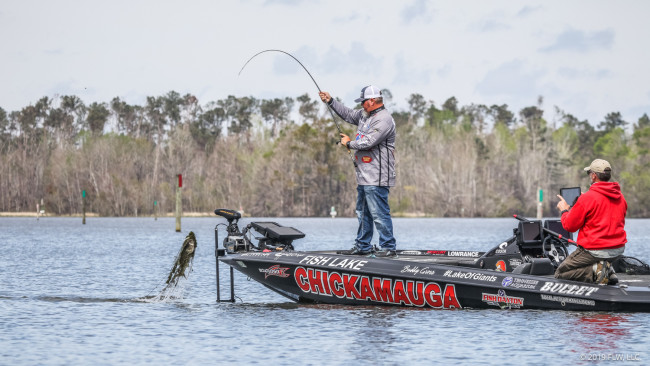
Less finesse in grass and open water
It stands to reason that when dissecting a bait to allow more exposure of the hook, going weedless isn’t as much of a concern. Such was the case at Toho, with Gross fishing an area filled with grass and nothing in the way of hard cover such as laydowns and stumps that might lead to harder snags. In the situation Gross encountered, skin-hooking the point might have been a detriment to hook-ups.
“If you’re in open water or fishing grass like I was doing, you really don’t have to worry about skin-hooking it,” Gross adds. “For the most part you can leave your hook hanging out. It’ll come through grass just fine.”
Gross isn’t reinventing the wheel with his hollow-body methods, but he doesn’t have to, either. What he does works, and it works well. Just ask the 85-plus pounds of fish he weighed in at Toho.